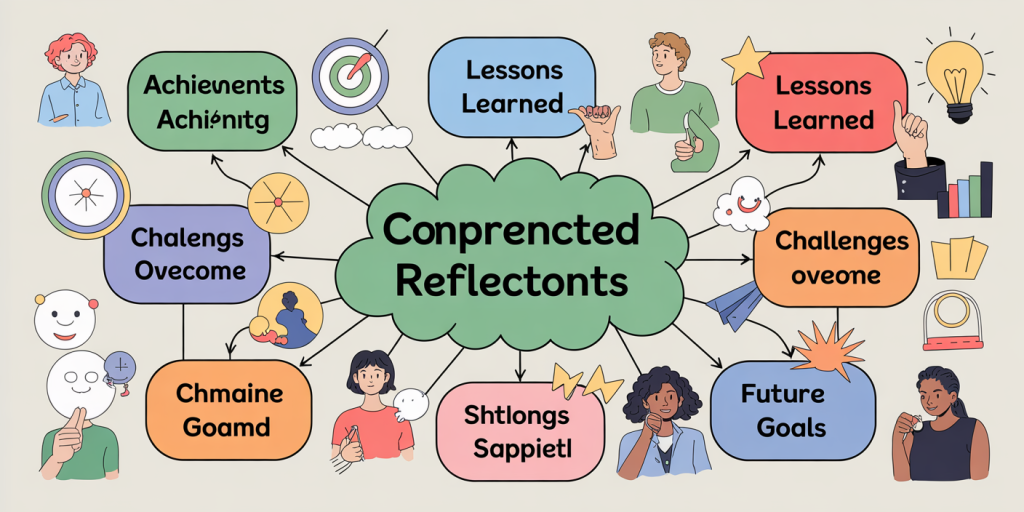How to Create a Yearly Reflection Ritual That Fuels Growth
Reflecting on the past year is a practice that can unlock powerful personal and professional growth. While many people casually glance back at the months gone by, a structured yearly reflection ritual creates a deliberate opportunity to assess achievements, learn from setbacks, and set purposeful goals. When done appropriately, this process fosters clarity, focus, and motivation, supporting continuous self-improvement throughout the coming year.
Incorporating a yearly reflection ritual into your annual routine is more than a momentary pause; it is a strategic process that synthesizes experiences and insights to direct future actions. According to a 2023 survey by the Harvard Business Review, individuals who engage in structured reflective practices are 30% more likely to achieve their set goals and report greater life satisfaction than those who do not. This article explores how to build an effective reflection ritual—backed by examples, data, and proven methods—that fuels growth year after year.
Why Yearly Reflection Matters: The Psychological and Practical Benefits
Yearly reflection is essential for setting a foundation of self-awareness, which is crucial in personal development and professional advancement. Psychological studies indicate that reflection enhances metacognition—the ability to think about one’s own thinking—resulting in better decision-making and emotional regulation. For instance, research published in the *Journal of Applied Psychology* (2022) found that employees who regularly engage in reflective practices experience reduced burnout and increased resilience.
Beyond psychological benefits, yearly reflection enables tangible improvements. Many successful organizations embed this practice via annual reviews or retrospectives to identify strengths and weaknesses, leading to smoother workflows and strategic innovation. At an individual level, this translates into recognizing patterns of behavior, pinpointing missed opportunities, and celebrating wins, all vital ingredients for growth.
For example, consider Sarah, a marketing professional who started implementing an end-of-year review ritual. She dedicated two hours every December to review her performance metrics, assess project outcomes, and evaluate her skill development. As a result, Sarah identified gaps in digital marketing knowledge and subsequently completed two certification courses the following year, boosting her career prospects.
Components of an Effective Yearly Reflection Ritual
Creating a yearly reflection ritual requires intentional design. It should be comprehensive yet manageable and customizable to fit personal preferences and lifestyles. Here are the key components to consider:
1. Dedicated Time and Space
Scheduling uninterrupted time for reflection is fundamental. This could mean setting aside a weekend morning or reserving an afternoon at the end of the calendar year. Environment plays a role, too—a quiet, comfortable space enhances focus and contemplation. For example, some prefer a cozy corner at home, while others choose outdoor surroundings conducive to mindfulness, such as parks or cafés.
2. Structured Reflection Questions
Preparing guiding questions helps to steer the reflection process and avoid vague or overwhelming self-inquiries. Prompts can range from broad to specific, including: What accomplishments am I proud of this year? What challenges did I face and how did I respond? Which habits contributed positively or negatively to my growth? What lessons did I learn from failures or setbacks? How did my relationships evolve? What new skills or knowledge did I acquire?
For a professional setting, additional questions might cover performance feedback and career aspirations.
3. Evidence Collection and Review
Gathering tangible data—such as journal entries, performance reports, photos, or financial summaries—enriches the reflection by grounding it in facts rather than memory alone. For instance, reviewing monthly sales reports or fitness tracking records can clarify trends or shifts over the past year.
4. Setting Goals and Intentions
Reflection naturally culminates in defining actionable goals. The SMART criteria (Specific, Measurable, Achievable, Relevant, Time-bound) is an effective framework to convert insights into practical objectives for the next year.
Comparison Table: Unstructured vs Structured Yearly Reflection Rituals
| Aspect | Unstructured Reflection | Structured Reflection Ritual |
|---|---|---|
| Duration | Brief and inconsistent | Dedicated, uninterrupted time blocks |
| Focus | General memories and feelings | Guided by specific prompts and data |
| Outcome | Vague insights and ideas | Clear, actionable goals and lessons |
| Frequency | Sporadic, often at year-end | Annual ritual with consistency |
| Impact on Growth | Limited, often lost in day-to-day life | Tangible, measurable progress |
Methods to Conduct Yearly Reflection: From Journaling to Peer Feedback
Different methods offer various avenues to deepen reflection. Here are some widely used approaches:
Journaling
Journaling remains one of the most accessible and effective methods. Writing down thoughts consolidates memories and emotions into coherent narratives. Studies show that journaling can lower stress levels by up to 20% and improve cognitive processing (American Psychological Association, 2021). Keeping a dedicated yearly reflection journal can help track progress over time and reveal patterns not immediately obvious.
Practical example: Michelle, an entrepreneur, maintains a ‘Reflection Journal’ where she dedicates weekly entries and compiles an annual summary every December. This practice has proven instrumental in pivoting her business strategy based on insights gained from yearly analysis.
Visual Mapping and Mind Mapping
Visual tools like mind maps or vision boards can complement textual reflections. They enable a holistic view of the year, connecting achievements, lessons, and goals spatially. This method also tap into creative thinking, often unlocking hidden insights.

Peer or Mentor Conversations
Reflection can be enriched through dialogue. Discussing outcomes and obstacles with a trusted mentor, coach, or peer provides external perspectives that bias self-evaluation and broaden understanding. For example, many leaders allocate time annually to a one-on-one debrief with mentors, which shapes their leadership development plan.
Incorporating Technology to Enhance Reflection Practices
Advancements in technology provide ample resources to support yearly reflection rituals, from apps to digital analytics tools. Digital solutions allow for data-driven reflection, automatic reminders, and multimedia storage, making it more engaging and less daunting.
For instance, apps like Day One or Reflectly assist users in journaling with prompts and mood tracking, facilitating a more dynamic reflective process. Analytics tools such as Google Analytics for website owners or performance dashboards for sales professionals provide detailed reports that can be reviewed systematically during reflection.

According to a 2022 report by Statista, nearly 45% of adults use digital tools for personal development purposes including reflection and goal tracking, showing growing acceptance and reliance on technology for these practices.
Measuring the Impact: How a Yearly Reflection Ritual Drives Growth
The real test of any reflection ritual lies in its results. Measuring progress post-reflection ensures the practice remains purposeful and effective.
Quantifying Growth
Tracking KPIs or personal metrics linked to goals set during reflection can reveal improvements and areas still needing attention. In professional contexts, metrics like sales growth, project completion rates, or skill certification accrual can be effective markers.
Qualitative Assessment
Growth is not just numerical. Increased self-awareness, improved emotional intelligence, better work-life balance, and enhanced relationships are crucial indicators that can be assessed through self-report surveys or feedback from peers.
Studies indicate that consistent reflective practitioners are 25% more likely to report increased self-confidence and 40% more likely to adapt positively to change (Center for Creative Leadership, 2023).
Future Perspectives: Evolving Your Ritual for Lifelong Growth
As individuals and environments evolve, so too should the yearly reflection ritual. Future-focused reflection not only reviews the past but anticipates emerging trends, challenges, and aspirations.
Innovative approaches may integrate AI-powered coaching, personalized analytics, and even virtual reality environments to deepen immersive reflection experiences. For instance, AI assistants could prompt personalized reflection questions based on behavioral data, creating highly tailored insights.
Moreover, adopting a growth mindset toward reflection itself—experimenting with different methods, time frames, or group formats—will ensure the ritual remains aligned with shifting goals and contexts.
In addition, promoting collective reflection rituals within teams or communities can amplify growth impact through shared accountability and knowledge exchange. Companies like Google and IDEO have pioneered this with regular ‘retrospective’ meetings that encourage continuous learning and innovation.
Final Thoughts
Cultivating a structured yearly reflection ritual that incorporates dedicated time, guided questions, tangible evidence, and goal-setting transforms vague resolutions into sustainable growth strategies. Leveraging various methods and technological tools further enrich this practice, making it adaptable and impactful across personal and professional domains.

By embracing reflection as a dynamic, evolving process rather than a fixed annual task, individuals can harness the power of their experiences to fuel continual transformation and success for years to come. The data is clear—regular reflection is no longer an optional luxury but a critical practice for those committed to leading intentional, empowered lives.
